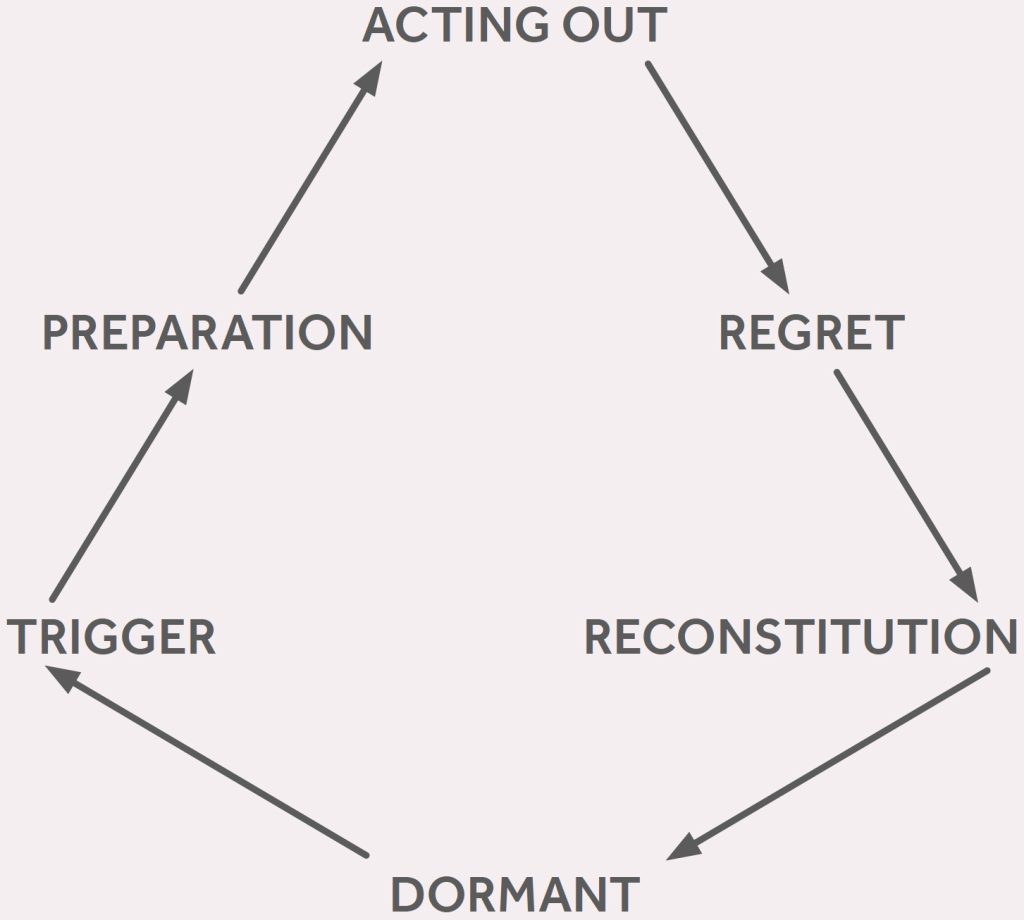How to stop unwanted sexual behaviours
Stopping compulsive sexual behaviours is best done when you can recognise your own unique cycle of addiction. This article covers my ‘six phase cycle of addiction’, the goal to beating sex addiction is to be able to personalise the cycle and stop it in its tracks.
In this series blog we are exploring the 6 steps of recovery through the CHOICE Recovery Model. We’ve already looked at Step 1 – the C – Challenge Core Beliefs and Step 2 – the H – Have a Vision, now is the time to focus on Step 3 the O – Overcoming Compulsive Behaviours.
When I started working in sex addiction recovery and began helping people to overcome porn addiction, over 15 years ago now, I thought the most important thing was to stop the behaviours. My focus was primarily on identifying triggers, challenging cognitive distortions and establishing relapse prevention strategies. I now know that whilst all of this is essential in addiction recovery, it is only part of the story – and that’s one of the reasons I developed the CHOICE Recovery Model and Pivotal Recovery. However – stopping – and staying stopped – is still essential.
How to stop acting out
Stopping compulsive sexual behaviours is best done when you can recognise your own unique cycle of addiction. Below you can see my ‘six phase cycle of addiction’, the goal to beating sex addiction is to be able to personalise the cycle and stop it in its tracks.

- Dormant – this is the phase where the addiction is temporarily in remission but the underlying problems that cause and maintain the problem remain unresolved. On the surface, life appears ‘normal’, but it’s just a matter of time before a trigger occurs.
- Trigger – the trigger is an event, an opportunity, a bodily sensation, emotion, or thought that activates the behaviour. Almost anything can be a trigger but more often than not, it’ll be a sexual opportunity or a negative emotion such as anxiety, anger, depression, sadness, boredom, loneliness or frustration.
- Preparation – the preparation phase varies in length considerably from just a few minutes to open a webpage, to many weeks of planning an affair. This phase includes practical preparation such as the where, when and how as well as psychological strategies to create the environment where acting out can be tolerated and/or enjoyed.
- Acting Out – for some, acting out is a single event such as visiting a sex worker, whereas for others it may be a week-long binge of pornography use. Some describe it as a highpoint that brings euphoria and relief but for others the accompanying relief is purely about getting the deed over and done with so they can finally begin their descent back to the comfort of the dormant phase.
- Regret – depending on the consequences of acting out and how you feel about acting out again, the regret phase may be little more than a momentary ‘ooops’ or it might be experienced as weeks of despair, shame and self-loathing.
- Reconstitution – during the reconstitution phase an addict is either consciously or unconsciously putting their life back together again. It may be a time for rebuilding self-esteem, covering tracks and/or renewing resolutions not to act out again
Stopping the cycle of addiction
To stop the cycle you need to personalise it so you know exactly when and how you can press the stop button. When you do the Pivotal Recovery course you’ll find there are 10 sessions devoted to understanding and personalising the cycle of addiction. This is also the section where you’ll find practical relapse prevention strategies so you have all the tools to stop.
Once you know why you are doing what you doing, then it is much, much easier to stop. That may sound obvious, but the problem with addiction is that acting out becomes so habitual that it’s genuinely difficult to understand why, in spite of your best intentions, you’ve found yourself back in the same old place again. When you can personalise your cycle and make the unconscious, conscious, then you can choose to behave in a different way. Remember – recovery is about CHOICE – but it’s difficult to make good choices until you know why you made the bad ones.
Next time we’ll look at the ‘I’ of the CHOICE Recovery Model – Identify Positive Sexuality. In the meantime, if you’re not already on the Pivotal Programme, why not start today.
